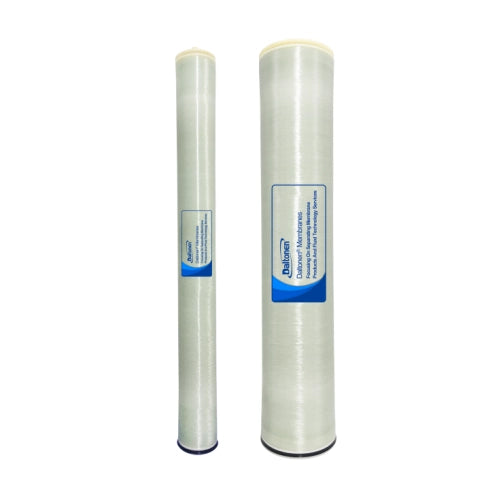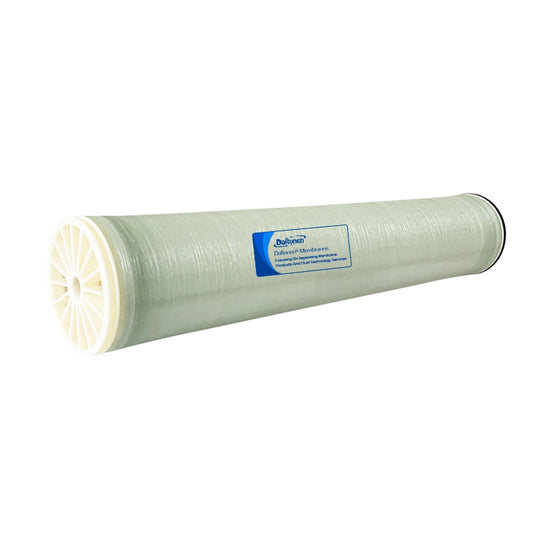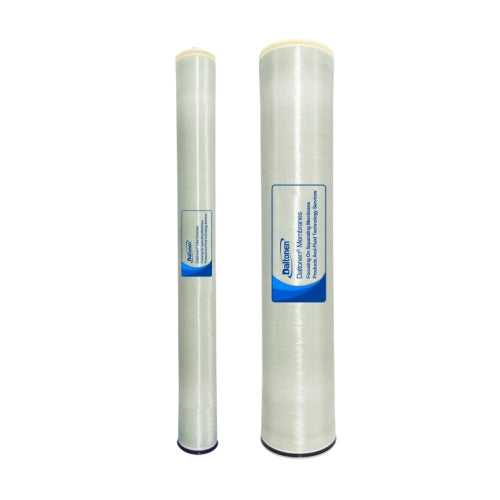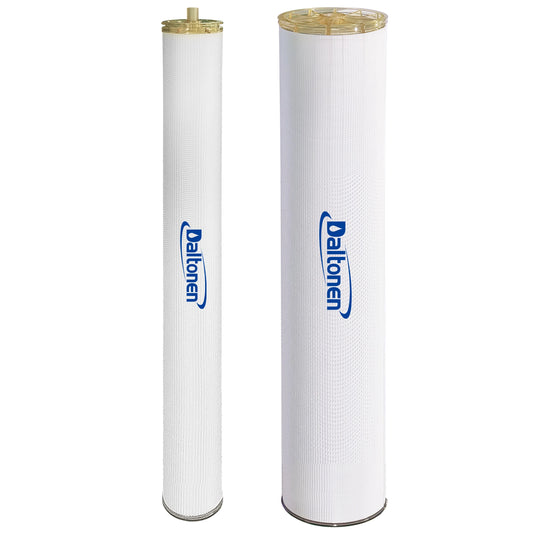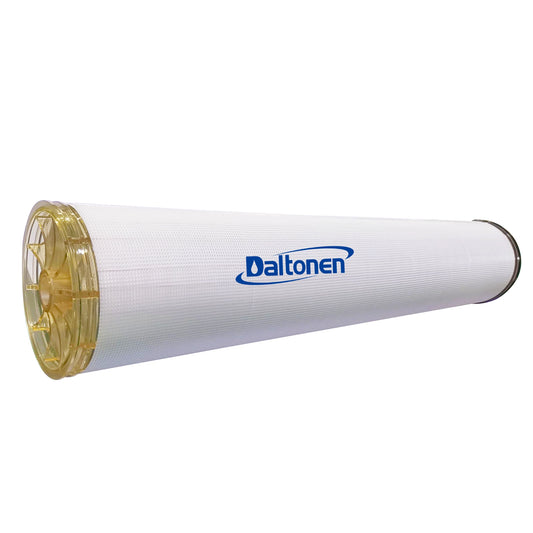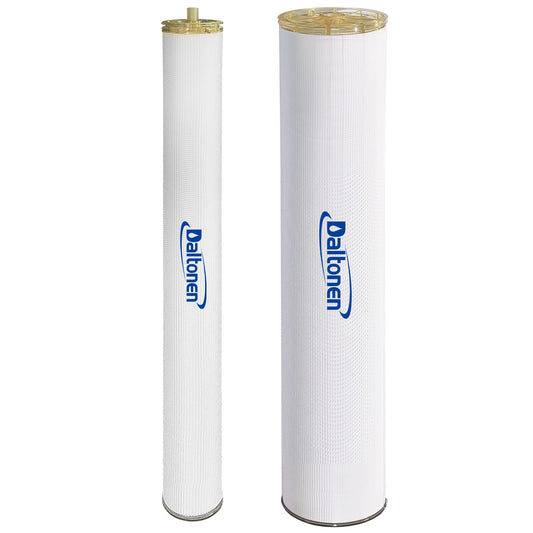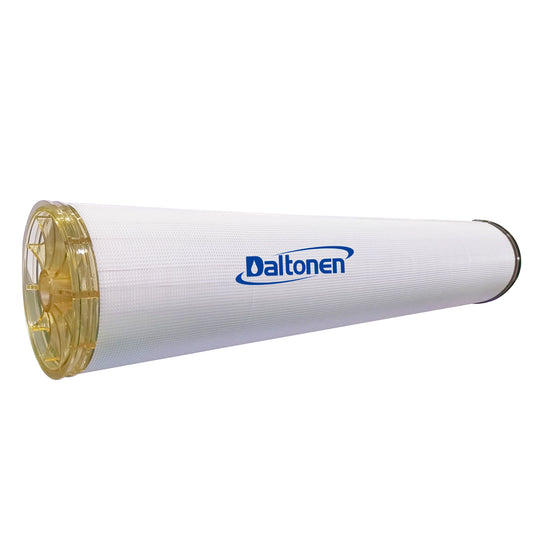Applications of High-Temperature Sanitary Thermal Disinfection Membranes in Various Industries
19 Jun 2025
1. Food Industry Applications
1.1 High-Temperature Sterilization and Disinfection Needs
The demand for high-temperature sanitary thermal disinfection membranes in the food industry primarily stems from the stringent requirements for food safety and quality. According to statistics from the World Health Organization, approximately 600 million people worldwide fall ill each year due to contaminated food, with around 420,000 fatalities. This underscores the critical importance of sterilization and disinfection during food processing.
High-temperature sterilization is a common method in food processing, effectively eliminating pathogens such as bacteria, viruses, and parasites. High-temperature sanitary thermal disinfection membranes can play a significant role in food packaging, the surfaces of processing equipment, and the cleaning processes of food processing workshops. For instance, in the meat processing industry, using high-temperature sanitary thermal disinfection membranes to disinfect processing equipment can significantly reduce the proliferation of harmful microorganisms like E. coli and Salmonella, ensuring the safety of meat products. Statistics indicate that the use of high-temperature sanitary thermal disinfection membranes can reduce bacterial residues on meat processing equipment surfaces by over 99.9%.
Moreover, the food industry has high requirements for the high-temperature resistance of sanitary materials. High-temperature sanitary thermal disinfection membranes can maintain stability at temperatures ranging from 121°C to 134°C, meeting the requirements for high-temperature sterilization during food processing. For example, in the production of canned foods, high-temperature sanitary thermal disinfection membranes can be used in the high-temperature sterilization process after can sealing, ensuring that canned foods do not spoil during long-term storage.

2. Medical Device Industry Applications
2.1 High-Temperature Disinfection Scenarios for Medical Equipment
High-temperature sanitary thermal disinfection membranes hold significant value in the medical device industry, particularly in high-temperature disinfection scenarios for medical equipment.
-
Disinfection Needs for Medical Devices: Disinfection of medical devices is a crucial aspect of ensuring medical safety. According to the World Health Organization, approximately 1 million hospital-acquired infections occur globally each year, with about 30% related to inadequate disinfection of medical devices. Therefore, medical devices must undergo strict disinfection before and after use to prevent cross-infection. For example, surgical instruments, endoscopes, syringes, and other medical devices must be subjected to high-temperature disinfection after use to ensure that pathogens on their surfaces and interiors are completely eradicated.
-
Advantages of High-Temperature Disinfection: High-temperature disinfection is an efficient and reliable method that can effectively eliminate pathogens such as bacteria, viruses, fungi, and spores. High-temperature sanitary thermal disinfection membranes can maintain stability at temperatures ranging from 121°C to 134°C, making them suitable for high-temperature disinfection processes of medical devices. Compared to traditional chemical disinfectants, high-temperature disinfection membranes offer the advantages of being non-toxic, residue-free, and non-corrosive, causing no damage to medical devices and posing no harm to human health.
-
Application Examples: In the disinfection process of medical devices, high-temperature sanitary thermal disinfection membranes can be used to wrap medical devices, ensuring their integrity and safety during high-temperature disinfection. For instance, in hospital operating rooms and disinfection supply centers, surgical instruments are wrapped in high-temperature sanitary thermal disinfection membranes before undergoing high-temperature steam sterilization. After high-temperature disinfection, the bacterial residue on the surface of medical devices can be reduced by over 99.99%, significantly enhancing the disinfection effectiveness. Additionally, high-temperature sanitary thermal disinfection membranes can be used during the transportation and storage of medical devices to prevent contamination.
-
Industry Standards and Regulations: The medical device industry has strict standards and regulations regarding the quality and safety of disinfection products. High-temperature sanitary thermal disinfection membranes must comply with relevant industry standards, such as ISO 11135 (Healthcare product sterilization - Ethylene oxide) and ISO 17665 (Healthcare product sterilization - Moist heat). These standards specify the performance indicators, testing methods, and quality control requirements for disinfection products, ensuring their safety and effectiveness in the disinfection process of medical devices. For example, the high-temperature resistance, chemical stability, and biocompatibility of high-temperature sanitary thermal disinfection membranes must meet the requirements of relevant standards to gain recognition and application in the medical device industry.
3. Pharmaceutical Industry Applications
3.1 High-Temperature Disinfection in Pharmaceutical Production Processes
The pharmaceutical industry has extremely strict requirements for the hygiene and quality of pharmaceutical production, and high-temperature sanitary thermal disinfection membranes play an indispensable role in this context.
-
Hygiene Requirements in Pharmaceutical Production: The pharmaceutical production process requires strict control of microbial contamination to ensure the quality and safety of pharmaceuticals. According to guidelines from the International Council for Harmonisation of Technical Requirements for Pharmaceuticals for Human Use (ICH), the microbial count in pharmaceutical production environments must be kept within specified limits. For example, in the production of sterile pharmaceuticals, the microbial contamination level in the production environment should be below 10 cfu/m³ (colony-forming units per cubic meter). High-temperature sanitary thermal disinfection membranes can effectively eliminate bacteria, molds, and yeasts in the production environment, ensuring the safety and hygiene of pharmaceutical production.
-
Applications of High-Temperature Disinfection: High-temperature disinfection is required in multiple stages of pharmaceutical production, and high-temperature sanitary thermal disinfection membranes are widely used in these scenarios. For example, in the processes of pharmaceutical compounding, mixing, filling, and packaging, production equipment and containers need to be regularly disinfected at high temperatures to prevent microbial contamination. High-temperature sanitary thermal disinfection membranes can be used to wrap production equipment and containers, ensuring their integrity and safety during high-temperature disinfection. Statistics indicate that the use of high-temperature sanitary thermal disinfection membranes can reduce microbial contamination on the surfaces of pharmaceutical production equipment by over 99.9%, significantly enhancing the hygiene level of pharmaceutical production.
-
Importance of High-Temperature Resistance: Pharmaceutical production often involves operations at high temperatures, such as in certain drying and sterilization processes for pharmaceuticals, where temperatures may reach 121°C to 134°C. High-temperature sanitary thermal disinfection membranes can maintain stability under these high-temperature conditions without degradation or release of harmful substances, ensuring that the quality of pharmaceuticals is not affected. Additionally, high-temperature sanitary thermal disinfection membranes have good chemical stability and biocompatibility, meaning they will not chemically react with pharmaceuticals or pose any harm to human health.
-
Compliance with Industry Standards and Regulations: The pharmaceutical industry has strict standards and regulations regarding the quality and safety of disinfection products. High-temperature sanitary thermal disinfection membranes must comply with relevant industry standards, such as GMP (Good Manufacturing Practice) and regulations from the FDA (U.S. Food and Drug Administration). These standards and regulations provide detailed specifications for the performance indicators, testing methods, and quality control requirements of disinfection products, ensuring their safety and effectiveness in pharmaceutical production processes. For example, the high-temperature resistance, chemical stability, and biocompatibility of high-temperature sanitary thermal disinfection membranes must meet the requirements of relevant standards to gain recognition and application in the pharmaceutical industry.
4. Electronics Industry Applications
4.1 High-Temperature Disinfection Needs in Electronic Component Production
The demand for high-temperature sanitary thermal disinfection membranes in the electronics industry primarily arises from the stringent requirements for the production environment of electronic components. The production process of electronic components demands extremely high levels of cleanliness and sterility, as even minor contamination can lead to a decline in product performance or even scrapping. According to statistics from the International Semiconductor Industry Association (SEMI), the global scrapping rate of electronic components due to non-compliant production environments is approximately 5% per year, highlighting the importance of effective disinfection in electronic component production.
In the production process of electronic components, high-temperature disinfection is an effective cleaning method. High-temperature sanitary thermal disinfection membranes can maintain stability at temperatures ranging from 121°C to 134°C, making them suitable for high-temperature disinfection processes in electronic component production. For example, in the production of semiconductor chips, the surfaces of production equipment and cleanrooms need to be regularly disinfected at high temperatures to prevent microbial and particulate contamination. The use of high-temperature sanitary thermal disinfection membranes can reduce microbial residues on the surfaces of production equipment by over 99.9%, significantly enhancing the cleanliness of the production environment.
Moreover, the electronics industry has high requirements for the high-temperature resistance and chemical corrosion resistance of sanitary materials. High-temperature sanitary thermal disinfection membranes are not only heat-resistant but also chemically stable, capable of withstanding the erosion of various chemical reagents without releasing harmful substances during the high-temperature disinfection process, ensuring that the quality of electronic components is not affected. For example, in the production processes of liquid crystal displays (LCDs) and organic light-emitting diode (OLED) panels, high-temperature sanitary thermal disinfection membranes can be used to clean and disinfect production equipment, ensuring a sterile production environment.
During the packaging process of electronic components, high-temperature sanitary thermal disinfection membranes also play a significant role. Packaging materials and equipment need to be disinfected at high temperatures to prevent microbial contamination. High-temperature sanitary thermal disinfection membranes can effectively eliminate bacteria, molds, and yeasts on the surfaces of packaging materials, ensuring the safety and hygiene of the packaging process. Statistics indicate that the use of high-temperature sanitary thermal disinfection membranes can reduce microbial contamination on the surfaces of packaging equipment by over 99.9%, significantly enhancing the quality and reliability of electronic component packaging.
The electronics industry has strict standards and regulations regarding the quality and safety of disinfection products. High-temperature sanitary thermal disinfection membranes must comply with relevant industry standards, such as ISO 14644 (Cleanrooms and associated controlled environments) and SEMI F20 (Cleanliness requirements for semiconductor manufacturing equipment). These standards specify the performance indicators, testing methods, and quality control requirements for disinfection products, ensuring their safety and effectiveness in the production processes of electronic components. For example, the high-temperature resistance, chemical stability, and biocompatibility of high-temperature sanitary thermal disinfection membranes must meet the requirements of relevant standards to gain recognition and application in the electronics industry.

5. Chemical Industry Applications
5.1 High-Temperature Disinfection Needs in Chemical Product Production
The chemical industry involves numerous chemical reactions and material processing, with extremely high hygiene requirements for equipment and environments. High-temperature sanitary thermal disinfection membranes hold significant value in the chemical industry, particularly in high-temperature disinfection processes during chemical product production.
-
Hygiene Challenges in Chemical Production: During the production of chemical products, equipment and pipelines are prone to microbial contamination, which can not only affect product quality but also lead to production accidents. For example, in the production of fine chemical products, microbial contamination can cause product spoilage or the formation of impurities, affecting the purity and performance of the products. According to industry statistics, microbial contamination can lead to a non-compliance rate of 5% to 10% in chemical products. Therefore, regular high-temperature disinfection of production equipment and pipelines is a key measure to ensure the safety and quality of chemical production.
-
Advantages of High-Temperature Disinfection: High-temperature sanitary thermal disinfection membranes can maintain stability at temperatures ranging from 121°C to 134°C, making them suitable for high-temperature disinfection processes in chemical production. Compared to traditional chemical disinfectants, high-temperature disinfection membranes offer the advantages of being non-toxic, residue-free, and non-corrosive, causing no damage to production equipment and pipelines and posing no contamination risk to chemical products. Additionally, high-temperature disinfection membranes have strong resistance to chemical corrosion, enabling long-term stable use in complex chemical production environments.
-
Application Examples: In the production of chemical products, high-temperature sanitary thermal disinfection membranes can be used to wrap production equipment and pipelines, ensuring their integrity and safety during high-temperature disinfection. For example, in the production of organic chemical products, after using high-temperature sanitary thermal disinfection membranes to disinfect reactors and pipelines, microbial residues on the equipment surfaces can be reduced by over 99.9%, significantly enhancing the hygiene level of the production environment. Moreover, high-temperature sanitary thermal disinfection membranes can also be used for disinfection of packaging materials for chemical products, preventing contamination during storage and transportation.
-
Compliance with Industry Standards and Regulations: The chemical industry has strict standards and regulations regarding the quality and safety of disinfection products. High-temperature sanitary thermal disinfection membranes must comply with relevant industry standards, such as ISO 9001 (Quality management systems) and ISO 14001 (Environmental management systems). These standards specify the performance indicators, testing methods, and quality control requirements for disinfection products, ensuring their safety and effectiveness in chemical production processes. For example, the high-temperature resistance, chemical stability, and biocompatibility of high-temperature sanitary thermal disinfection membranes must meet the requirements of relevant standards to gain recognition and application in the chemical industry.
6. Other Industry Applications
6.1 High-Temperature Disinfection Needs in Special Industrial Sectors
High-temperature sanitary thermal disinfection membranes also have extensive application demands in special industrial sectors, which have equally strict hygiene and disinfection requirements and often face unique challenges.
-
Healthcare Sector:
-
Disinfection Needs for Medical Equipment: In the healthcare sector, in addition to the disinfection of medical devices, high-temperature sanitary thermal disinfection membranes can also be used for disinfecting other hospital equipment, such as hospital beds and wheelchairs. These devices are prone to contamination by pathogens during use and require regular high-temperature disinfection. According to data from the U.S. Centers for Disease Control and Prevention (CDC), healthcare-associated infections (HAIs) lead to approximately 1 million infection cases annually, with about 30% related to incomplete equipment disinfection. The use of high-temperature sanitary thermal disinfection membranes can effectively reduce these infection risks.
-
Application Examples: In hospital disinfection supply centers, high-temperature sanitary thermal disinfection membranes are used to wrap medical equipment to be disinfected, followed by high-temperature steam sterilization. After disinfection, bacterial residues on the surfaces of the equipment can be reduced by over 99.99%, significantly enhancing disinfection effectiveness.
-
Aerospace Sector:
-
Disinfection Needs for Aerospace Equipment: The aerospace sector has extremely high hygiene and disinfection requirements, particularly in the maintenance and cleaning of aircraft. According to statistics from the International Air Transport Association (IATA), microbial contamination in aircraft interiors can increase the risk of respiratory infections among passengers. Therefore, regular high-temperature disinfection of aircraft interiors is an important measure to ensure passenger health.
-
Application Examples: During aircraft maintenance, high-temperature sanitary thermal disinfection membranes are used to wrap aircraft seats, armrests, and other equipment, followed by high-temperature disinfection. This disinfection method not only effectively eliminates pathogens but also protects the surfaces of the equipment from corrosion by chemical disinfectants.
-
Agriculture Sector:
-
Disinfection Needs for Agricultural Equipment: In the agriculture sector, high-temperature sanitary thermal disinfection membranes can be used for disinfecting agricultural equipment, such as greenhouses and irrigation systems. These devices are prone to microbial contamination during use, which can affect crop growth and quality. According to data from the Food and Agriculture Organization of the United Nations (FAO), global crop losses due to agricultural equipment contamination can reach 10% to 15% annually. Therefore, regular high-temperature disinfection of agricultural equipment is an important measure to ensure crop safety.
-
Application Examples: During the maintenance of greenhouses, high-temperature sanitary thermal disinfection membranes are used to wrap the frames and equipment of the greenhouses, followed by high-temperature disinfection. After disinfection, microbial residues on the surfaces of the equipment can be reduced by over 99.9%, significantly enhancing the hygiene level of agricultural equipment.
-
Automotive Manufacturing Sector:
-
Disinfection Needs for Automotive Components: In the automotive manufacturing sector, high-temperature sanitary thermal disinfection membranes can be used for disinfecting automotive components, such as seats and steering wheels. These components are prone to microbial contamination during production, which can affect the hygiene and quality of vehicles. According to statistics from the International Organization of Motor Vehicle Manufacturers (OICA), approximately 5% of global automotive recalls each year are due to component contamination. Therefore, regular high-temperature disinfection of automotive components is an important measure to ensure vehicle quality.
-
Application Examples: During the production process of automotive components, high-temperature sanitary thermal disinfection membranes are used to wrap components to be disinfected, followed by high-temperature disinfection. After disinfection, microbial residues on the surfaces of the components can be reduced by over 99.9%, significantly enhancing the hygiene level of the components.
-
Energy Sector:
-
Disinfection Needs for Energy Equipment: In the energy sector, high-temperature sanitary thermal disinfection membranes can be used for disinfecting energy equipment, such as solar panels and wind turbines. These devices are prone to microbial contamination during operation, which can affect their efficiency and lifespan. According to statistics from the International Energy Agency (IEA), global energy losses due to equipment contamination can reach 5% to 10% annually. Therefore, regular high-temperature disinfection of energy equipment is an important measure to ensure energy supply.
-
Application Examples: During the maintenance of solar panels, high-temperature sanitary thermal disinfection membranes are used to wrap the solar panels, followed by high-temperature disinfection. After disinfection, microbial residues on the surfaces of the solar panels can be reduced by over 99.9%, significantly enhancing the efficiency and lifespan of the solar panels.
Tags:
